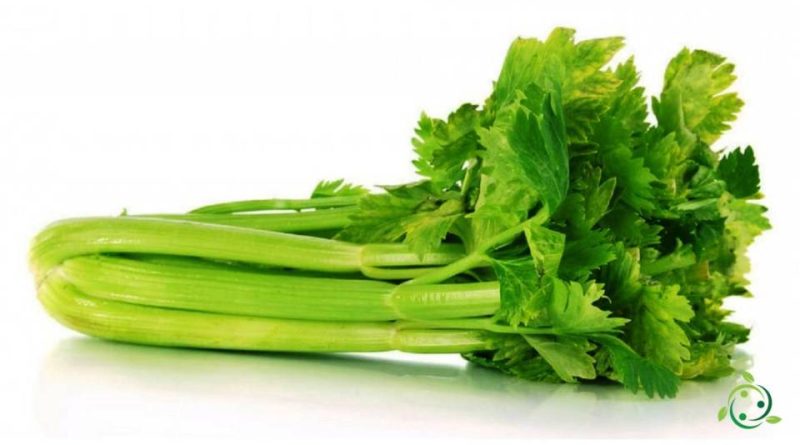Nutritional value of celery
Nutritional value of celery
Celery (Apium graveolens L.) is a biennial herbaceous species of the Apiaceae family, native to the Mediterranean area and known as a medicinal plant since the time of Homer.
Features –
Celery is a biennial and sometimes perennial herbaceous plant, with a strong aromatic odor, with a thin tapered root in the spontaneous one, cylindrical-fusiform in the cultivated variety.
This plant is characterized by an angular cylindrical stem 30-60 cm high (up to 1 m) sometimes hollow, prostrate, erect or ascending, fistulous and branchy.
The leaves are glossy, 1-3 pinnatosette, with incised oval or rhombic toothed segments, sometimes completely divided; upper leaves sometimes ternate opposite.
The flowers are hermaphrodite, with five 0.5 mm white petals, gathered in umbels composed of 6-12 rays without envelope and envelope (bracts and bracts absent).
The fruit is an ovoid-globose diachene, flattened and brown, with two mericarps with five very visible but thin vertical ribs, joined by a central axis (carpophore), from which the mericarps only separate when ripe.
Nutritional factsheet –
Celery is a vegetable extremely rich in water, but in its composition we also find some important mineral salts such as:
– potassium;
– magnesium;
– soccer;
– phosphorus.
There are fibers and vitamins such as: C, E, K and B.
Obviously the concentration of these components varies according to the cultivation method and the soil where it is grown.
In addition, the calories of celery are few (20 per 100 grams of product), so it is a light and satiating food.
The main constituents are:
– Fruits: essential oil (consisting of limonene, selinene, various terpenes); coumarins, flavonoids.
– Plant: essential oil, apiina.
– Root: essential oil, asparagine, choline, tyrosine, glycolic and glyceric acids, feruclic and caffeic acids, p-coumaric acid, organic acids, bergapten.
Property –
Celery is a plant counted among the officinalis since the time of the ancient Egyptians.
Celery has therefore been used since ancient times for a number of medical applications.
The fruits are the most active part due to the richness of essential oil and have an aromatizing, digestive, carminative, diuretic and emmenagogue action.
For internal use, the infusion and the tincture of the roots can stimulate diuresis (purifying action in case of gout) and digestive processes. The fruit infusion, on the other hand, is indicated for stomach and intestinal gases and also has an emmenagogue and stimulating action on the pelvic circulation, a characteristic that has contributed to giving the plant an aphrodisiac action. The spasmolytic, sedative and bactericidal properties of the fruit are worth noting. Regarding the food use of the plant, it is interesting to remember, as mentioned, that celery is rich in fiber, calcium, phosphorus, iron, sodium, potassium and a fair amount of vitamins B1, B2, PP, A, this compared to a low calorie.
For external use it is an excellent healing agent on sores, ulcers and chilblains; however, it is to be practiced with extreme caution due to the photo-sensitizing power of coumarins.
As for toxicity and secondary effects: the administration of medicinal preparations of the plant is to be avoided in case of acute or chronic kidney disease and during pregnancy.
Furthermore, due to the presence of some allergenic proteins (Api g 1, Api g 4, Api g 5), it can cause even severe food allergy.

